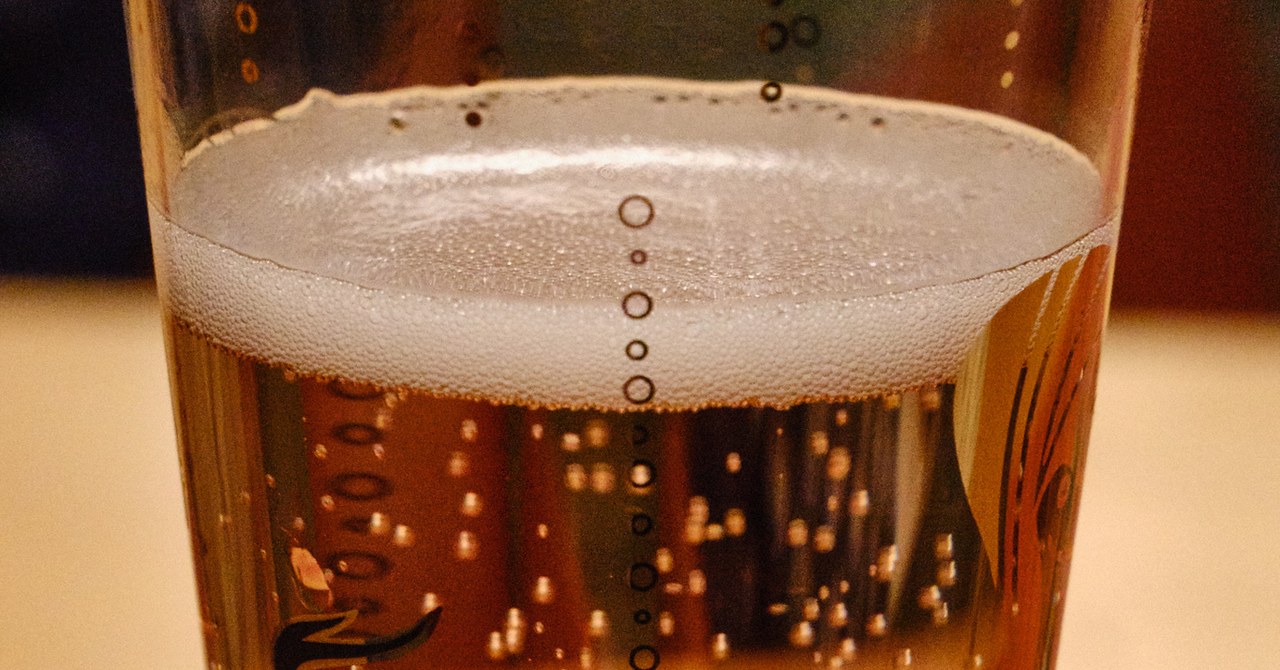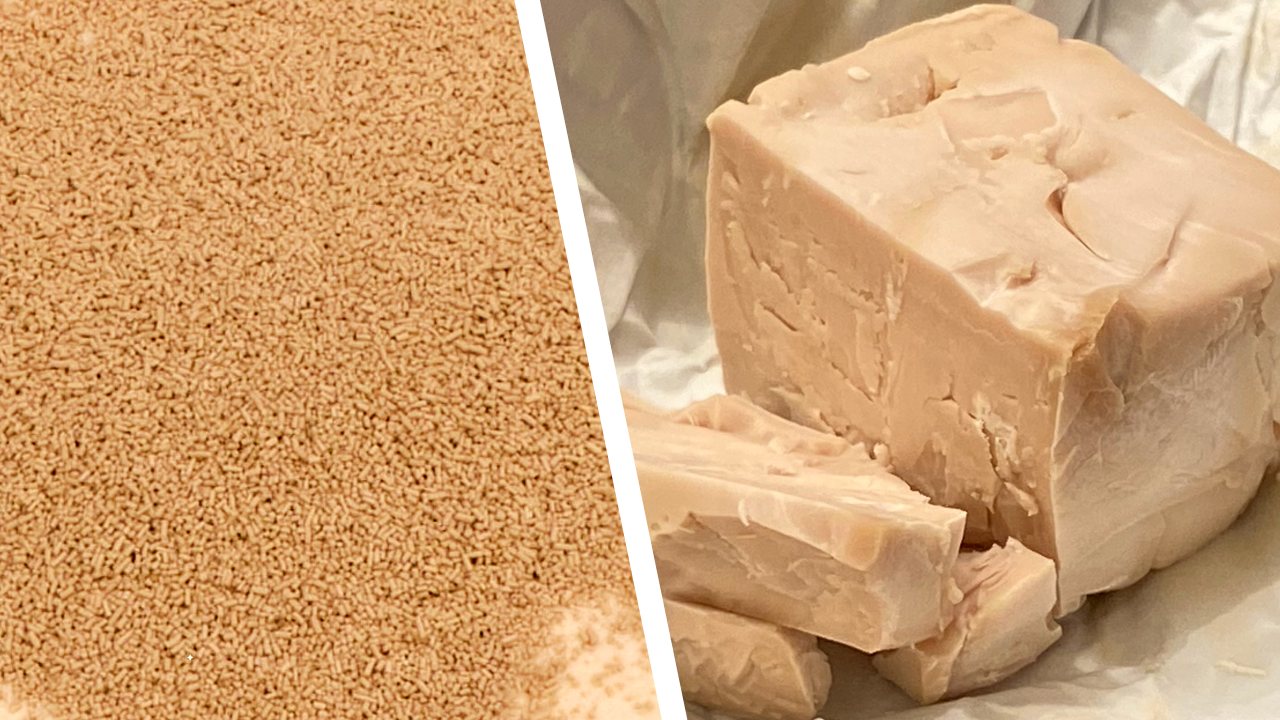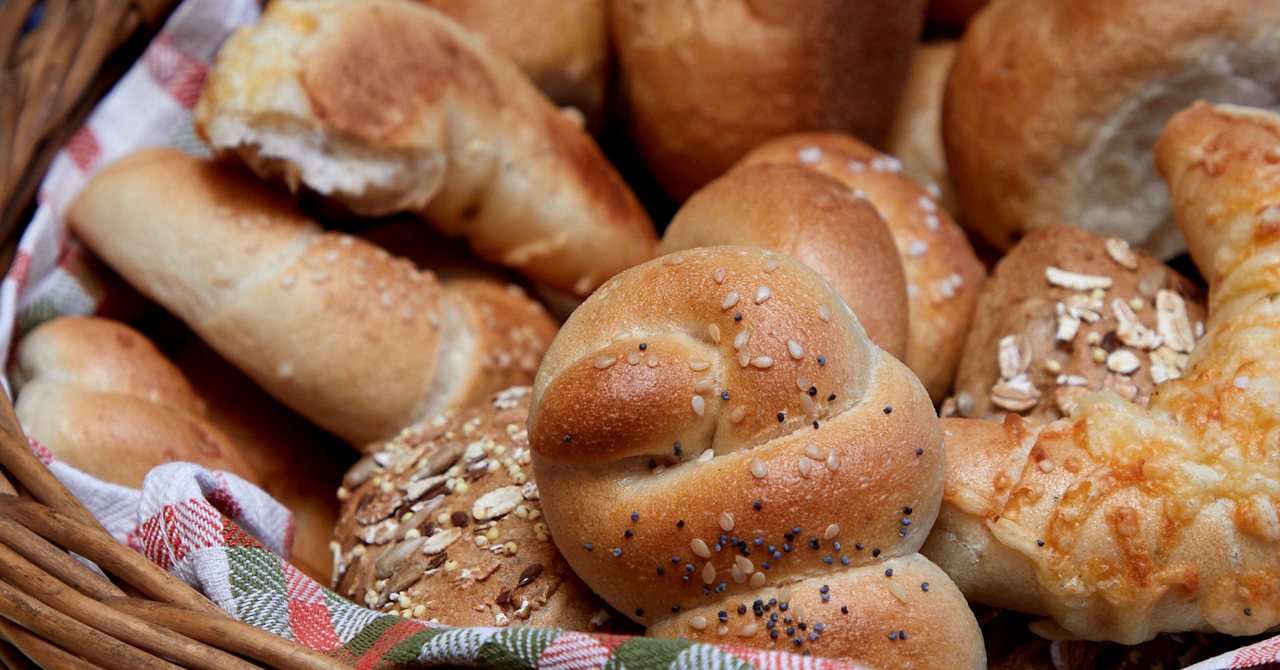New insights about yeast and histamine intolerance
08/14/2020 Food Intolerances
Many nutrition guides label yeast as unsuitable for people with a histamine intolerance. Some claim that the yeast itself contains histamine, others say that the yeast in foods like bread or beer produces enormous amounts of histamine. In addition, yeast and yeast extract are often treated as the same thing. We take a closer look at these statements and explain what’s really going on.

The baking of bread has been a part of human history for thousands of years, and has always been closely linked to yeasts, which are micro-organisms of the kingdom fungi. In the beginning the yeasts reached the dough via the air, only much later did we learn to cultivate them. The Latin name, Saccharomyces cerevisiae, also shows the close connection to brewing beer, as cerevisiae is derived from the term for beer – for a long time, the same yeast was used for baking bread and brewing beer.
Today there are different yeast strains for different usages, like for brewing beer or producing wine, that ensure an optimal and, more importantly, replicable result.
In stores you can usually find two different kinds of baker's yeast: fresh yeast and dry yeast (see figure 1). Fresh yeast is grown in a multi-layered process from a nutritive medium based on molasses, a side product of industrial sugar production. For dry yeast, the yeast grown in the nutritive medium is cleaned and dried and an emulsifier is added to prevent it from drying out completely.

▲ Figure 1: Dry yeast (on the left) and fresh yeast (on the right).
Yeast metabolizes primarily short-chained sugars to carbon dioxide or to alcohol, depending on the presence of oxygen in its environment. It is often said that the fermentation caused by yeast produces high amounts of biogenic amines. This statement is probably based on the fact that many foods that use yeast fermentation, like beer, wine or sparkling wine, also contain histamine, tyramine and other biogenic amines.
However, many studies looking into the metabolization of yeast contradict this statement – yeasts do not produce histamine. It is more likely that the biogenic amines reach affected products via contaminated ingredients, or that they occur because of the contamination with germs that create histamine (e. g. certain lactic acid bacteria). This can be the case during mashing, when the proper hygienic precautions are not followed.

▲ Figure 2: Baker’s yeast is an essential ingredient for bread and buns.
The same goes for bread production: The metabolization of yeast during the baking of bread does not release any histamine. However, there are types of breads that are made by using spontaneous fermentation or sour dough that can sometimes contain histamine-producing organisms. If you want to know more about the histamine content of these breads, check out our app Food Intolerances.
Yeast is an essential part of our digestive system, even though its 0.1 % make up only a fraction of the microbiome, which largely consists of lactic acid bacteria. Still yeasts produce numerous digestive enzymes that are needed by the human digestive systems.
One yeast strain (Saccharomyces cerevisiae var. boulardii, abbr. S. Boulardii) is even used to treat diarrhea, IBS or Morbus Crohn, because it handles that human body temperature of 37 °C (98.6 °F ) much better than baker’s or brewer’s yeast, which prefers around 30 °C (86 °F).
Yeasts have many useful uses: They can reduce toxins, neutralize harmful germs, have a positive impact on the intestinal flora, improve the intestinal barrier function and boost the immune system. S. boulardii also produces polyamines (e. g. spermine or spermidine) in the intestine, which indirectly triggers an increased production of DAO, the main enzyme for histamine degradation.
With a normal diet, you usually consume around 5 g yeast daily via foods like bread or beer, which plays an important role for the natural balance of the intestinal flora.
Many websites claim that foods with yeast contain a lot of histamine. The origins of this statement can be traced to a study from the year 1969, which looked at the histamine content of yeast extracts.
Yeast extract is produced by a process that employs the cells’ own digestive enzymes from heat-killed yeast to break down the proteins within the cell contents. This leads to the formation of flavor-rich compounds that can be extracted and concentrated.
Unfortunately, this process creates extremely high amounts of biogenic amines, which are very problematic if you a have a histamine intolerance.
However, yeast extracts are not the same as yeast or nutritional yeast (see table 1). These products are about as similar as milk and hydrolyzed whey protein isolate. Unfortunately both terms have been used interchangeably, which led to the wrong conclusion that yeast contains a lot of histamine. Another important thing to consider is that hygienic conditions have vastly improved in the last 50 years and the values from 1969 are probably outdated by now.
▲ Table 1: Overview of assorted yeast-based ingredients.
Despite the above explanation, it’s still a valid observation that people with food intolerances often react negatively to alcoholic beverages with yeast – and to a lesser degree to baking goods. There are several possible explanations for this: the unfortunate combination of alcohol and biogenic amines, a high content of FODMAPs, food additives, a gluten intolerance or even allergies.
Another factor to consider is the massive usage of industrial baking mixes that contain emulsifiers. Some of these emulsifiers (e. g. carboxymethyl cellulose or polysorbate 80) have come under increasing criticism since a study published in the magazine Nature in the year 2015 has shown that they can drastically disrupt the intestinal flora and cause intestinal inflammations.
These baking mixes also significantly decrease the time the dough has to rise, so that the yeast hardly has any time to break down any hard-to-digest compounds. This is also the reason why traditionally baked bread, where the dough rises for a longer time, is usually easier to digest, but also rarer to find.
All this leads to the conclusion that yeast does not deserve its bad reputation and that in most cases it‘s actually other ingredients that cause intolerance symptoms. That means that there is absolutely no need to avoid foods that contain yeast. To find out if it is really the yeast that causes symptoms, you would need to test this separately. Unfortunately, since some baking goods contain around 20 different ingredients – many of which could be the cause of food intolerances – that can't be done by using bread.
This blog post was revised on 09/02/2024.
Back to blog
References:
M. Palma et al., Probiotic Saccharomyces cerevisiae strains as biotherapeutic tools: is there room for improvement?, Appl Microbiol Biotechnol 99:16 (2015), 6563–70
A. Noce et al., Impact of Gut Microbiota Composition on Onset and Progression of Chronic Non-Communicable Diseases, Nutrients 11:5 (2019), 1073–1108
M. Heitmann et al., Impact of Saccharomyces cerevisiae metabolites produced during fermentation on bread quality parameters: a review, Critical reviews in food science and nutrition 58:7 (2018), 1152–1164
M. Izquierdo-Pulido et al., Influence of Saccharomyces cerevisiae var. uvarum on histamine and tyramine formation during beer fermentation, Food Chemistry 54 (1995), 51–54
M. Moré et al., Saccharomyces boulardii CNCM I-745 improves intestinal enzyme function: a trophic effects review, Clinical Medicine Insights: Gastroenterology 11 (2017), 1–14
B. Blackwell et al., Histamine and Tyramine Content of Yeast Products, Journal of Food Science 34:1 (1969), 47–51
W. Zeng et al., Cutting edge: Probiotics and Fecal Microbiota Transplantation in Immunomodulation, Journal of Immunology Research (2019), 1–17
B. Chassaing et al., Dietary emulsifiers impact the mouse gut microbiota promoting colitis and metabolic syndrome, Nature. Band 519, Nummer 7541, 03 2015, 92–96

Using yeast has a long history
The baking of bread has been a part of human history for thousands of years, and has always been closely linked to yeasts, which are micro-organisms of the kingdom fungi. In the beginning the yeasts reached the dough via the air, only much later did we learn to cultivate them. The Latin name, Saccharomyces cerevisiae, also shows the close connection to brewing beer, as cerevisiae is derived from the term for beer – for a long time, the same yeast was used for baking bread and brewing beer.
Today there are different yeast strains for different usages, like for brewing beer or producing wine, that ensure an optimal and, more importantly, replicable result.
In stores you can usually find two different kinds of baker's yeast: fresh yeast and dry yeast (see figure 1). Fresh yeast is grown in a multi-layered process from a nutritive medium based on molasses, a side product of industrial sugar production. For dry yeast, the yeast grown in the nutritive medium is cleaned and dried and an emulsifier is added to prevent it from drying out completely.

▲ Figure 1: Dry yeast (on the left) and fresh yeast (on the right).
Does yeast produce histamine?
Yeast metabolizes primarily short-chained sugars to carbon dioxide or to alcohol, depending on the presence of oxygen in its environment. It is often said that the fermentation caused by yeast produces high amounts of biogenic amines. This statement is probably based on the fact that many foods that use yeast fermentation, like beer, wine or sparkling wine, also contain histamine, tyramine and other biogenic amines.
Why do we care so much about this topic?
 We have been developing our price-winning "Food Intolerances" app since 2011 and we are happy to share our knowledge with you. Check it out:
We have been developing our price-winning "Food Intolerances" app since 2011 and we are happy to share our knowledge with you. Check it out:
However, many studies looking into the metabolization of yeast contradict this statement – yeasts do not produce histamine. It is more likely that the biogenic amines reach affected products via contaminated ingredients, or that they occur because of the contamination with germs that create histamine (e. g. certain lactic acid bacteria). This can be the case during mashing, when the proper hygienic precautions are not followed.

▲ Figure 2: Baker’s yeast is an essential ingredient for bread and buns.
The same goes for bread production: The metabolization of yeast during the baking of bread does not release any histamine. However, there are types of breads that are made by using spontaneous fermentation or sour dough that can sometimes contain histamine-producing organisms. If you want to know more about the histamine content of these breads, check out our app Food Intolerances.
Probiotic properties of yeasts
Yeast is an essential part of our digestive system, even though its 0.1 % make up only a fraction of the microbiome, which largely consists of lactic acid bacteria. Still yeasts produce numerous digestive enzymes that are needed by the human digestive systems.
One yeast strain (Saccharomyces cerevisiae var. boulardii, abbr. S. Boulardii) is even used to treat diarrhea, IBS or Morbus Crohn, because it handles that human body temperature of 37 °C (98.6 °F ) much better than baker’s or brewer’s yeast, which prefers around 30 °C (86 °F).
Yeasts have many useful uses: They can reduce toxins, neutralize harmful germs, have a positive impact on the intestinal flora, improve the intestinal barrier function and boost the immune system. S. boulardii also produces polyamines (e. g. spermine or spermidine) in the intestine, which indirectly triggers an increased production of DAO, the main enzyme for histamine degradation.
With a normal diet, you usually consume around 5 g yeast daily via foods like bread or beer, which plays an important role for the natural balance of the intestinal flora.
Where does the bad reputation of yeast in regard to histamine intolerance come from?
Many websites claim that foods with yeast contain a lot of histamine. The origins of this statement can be traced to a study from the year 1969, which looked at the histamine content of yeast extracts.
Yeast extract is produced by a process that employs the cells’ own digestive enzymes from heat-killed yeast to break down the proteins within the cell contents. This leads to the formation of flavor-rich compounds that can be extracted and concentrated.
Unfortunately, this process creates extremely high amounts of biogenic amines, which are very problematic if you a have a histamine intolerance.
However, yeast extracts are not the same as yeast or nutritional yeast (see table 1). These products are about as similar as milk and hydrolyzed whey protein isolate. Unfortunately both terms have been used interchangeably, which led to the wrong conclusion that yeast contains a lot of histamine. Another important thing to consider is that hygienic conditions have vastly improved in the last 50 years and the values from 1969 are probably outdated by now.
| Product | Description |
|---|---|
| Yeast | Living cells of S. cerevisiae used for baking bread or brewing beer. |
| Nutritional yeast | Whole yeast cells killed with heat, purified and dried. Popular ingredient for vegan or vegetarian recipes. |
| Yeast extract | Concentrated flavor compounds extracted from the hydrolyzed cell contents of dead yeast cells. Used as flavor enhancer. |
So how come foods containing yeast are often poorly tolerated?
Despite the above explanation, it’s still a valid observation that people with food intolerances often react negatively to alcoholic beverages with yeast – and to a lesser degree to baking goods. There are several possible explanations for this: the unfortunate combination of alcohol and biogenic amines, a high content of FODMAPs, food additives, a gluten intolerance or even allergies.
Another factor to consider is the massive usage of industrial baking mixes that contain emulsifiers. Some of these emulsifiers (e. g. carboxymethyl cellulose or polysorbate 80) have come under increasing criticism since a study published in the magazine Nature in the year 2015 has shown that they can drastically disrupt the intestinal flora and cause intestinal inflammations.
These baking mixes also significantly decrease the time the dough has to rise, so that the yeast hardly has any time to break down any hard-to-digest compounds. This is also the reason why traditionally baked bread, where the dough rises for a longer time, is usually easier to digest, but also rarer to find.
All this leads to the conclusion that yeast does not deserve its bad reputation and that in most cases it‘s actually other ingredients that cause intolerance symptoms. That means that there is absolutely no need to avoid foods that contain yeast. To find out if it is really the yeast that causes symptoms, you would need to test this separately. Unfortunately, since some baking goods contain around 20 different ingredients – many of which could be the cause of food intolerances – that can't be done by using bread.
This blog post was revised on 09/02/2024.
Why do we care so much about this topic?
 We have been developing our price-winning "Food Intolerances" app since 2011 and we are happy to share our knowledge with you. Check it out:
We have been developing our price-winning "Food Intolerances" app since 2011 and we are happy to share our knowledge with you. Check it out:
Share article
Share article
Back to blog
References:
M. Palma et al., Probiotic Saccharomyces cerevisiae strains as biotherapeutic tools: is there room for improvement?, Appl Microbiol Biotechnol 99:16 (2015), 6563–70
A. Noce et al., Impact of Gut Microbiota Composition on Onset and Progression of Chronic Non-Communicable Diseases, Nutrients 11:5 (2019), 1073–1108
M. Heitmann et al., Impact of Saccharomyces cerevisiae metabolites produced during fermentation on bread quality parameters: a review, Critical reviews in food science and nutrition 58:7 (2018), 1152–1164
M. Izquierdo-Pulido et al., Influence of Saccharomyces cerevisiae var. uvarum on histamine and tyramine formation during beer fermentation, Food Chemistry 54 (1995), 51–54
M. Moré et al., Saccharomyces boulardii CNCM I-745 improves intestinal enzyme function: a trophic effects review, Clinical Medicine Insights: Gastroenterology 11 (2017), 1–14
B. Blackwell et al., Histamine and Tyramine Content of Yeast Products, Journal of Food Science 34:1 (1969), 47–51
W. Zeng et al., Cutting edge: Probiotics and Fecal Microbiota Transplantation in Immunomodulation, Journal of Immunology Research (2019), 1–17
B. Chassaing et al., Dietary emulsifiers impact the mouse gut microbiota promoting colitis and metabolic syndrome, Nature. Band 519, Nummer 7541, 03 2015, 92–96
![[Blog]](../../rw_common/images/baliza_logo_retina.png)



